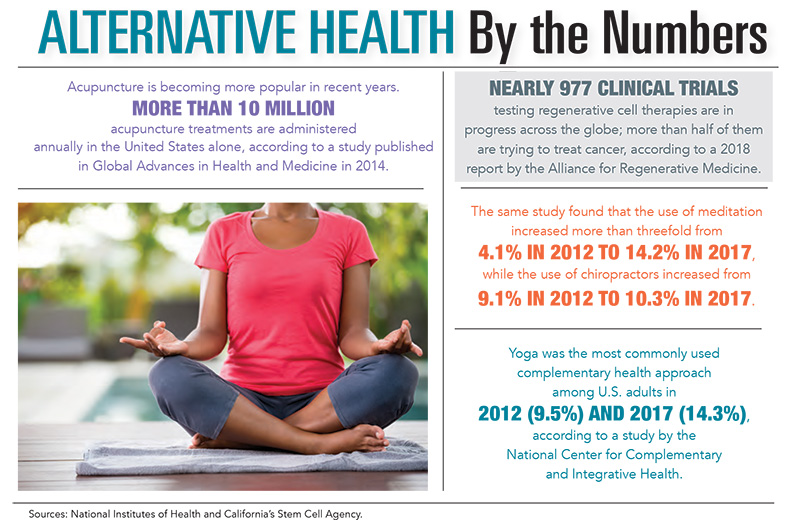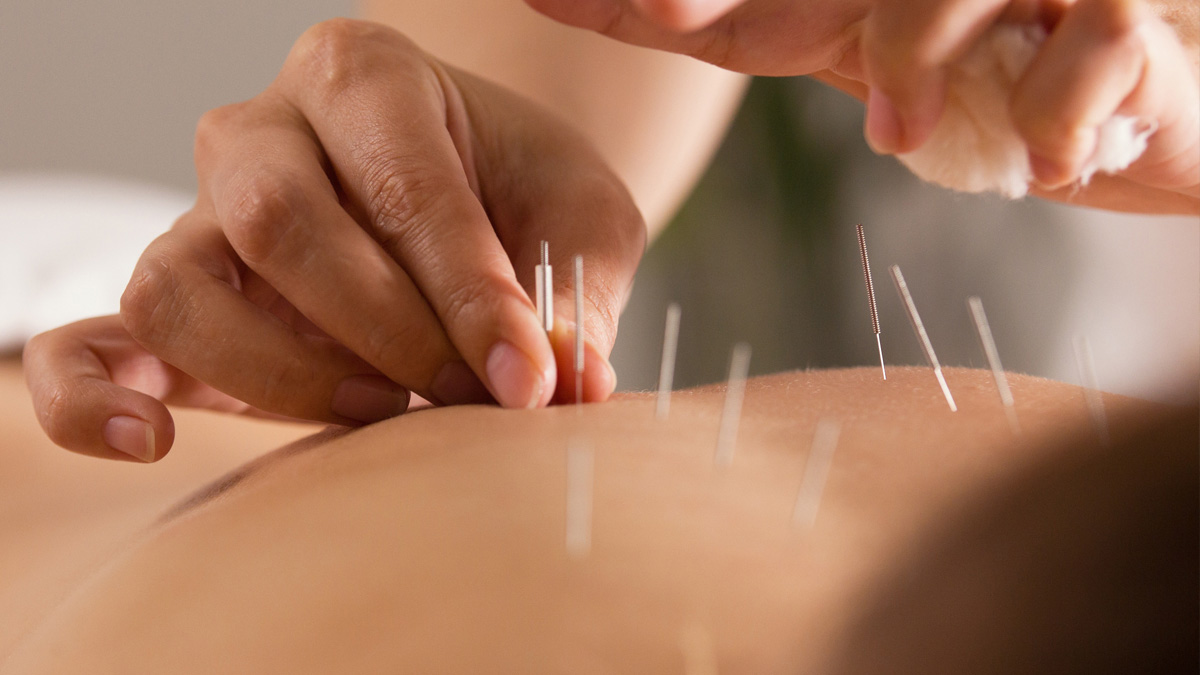Hocus pocus? Ineffective? Too expensive? Not backed by scientific research? A waste of time, energy and money?
The reasons Dr. Jeffrey Farricielli, who practices at the Center for Regenerative Medicine in Mount Pleasant, said his patients give for being unwilling to try alternative medicine approaches are varied, but most of them boil down to the fear of the unknown.
Though he knows patients sometimes push back on his suggestions to try therapies such as regenerative medicine, physical therapy, chiropractic care, acupuncture, cognitive therapy and private trainers, it is often worth trying these less-invasive approaches before he gets out his prescription pad or starts writing referrals to a surgeon, he said.
“Although I am a medical doctor, I strongly believe that the less we intervene with drugs and surgery, the better the person’s long-term health will be,” Dr. Farricielli said.
And it’s not just because there’s often a long rehabilitation period with surgeries. Patients who have surgery to fix one problem often end up having to endure additional surgeries later.
“In the case of spinal fusion surgery, for example, once this artificial relationship is established, it places stress on other areas of the spine which inevitably fail, requiring potentially more surgery,” Dr. Farricielli said.
And while pharmaceuticals are sometimes a less-invasive option, drugs could help one symptom but make other issues worse – or even create new ones.
“We all know that most drugs have side effects,” Dr. Farricielli said. “Treating one organ system could cause damage elsewhere.”
Dr. Farricielli specializes in regenerative medicine, which, as he explains it, is harvesting and isolating the body’s healing and anti-inflammatory cells, concentrating them and placing them in an area of damage or injury, thus allowing the body to heal itself.
“It’s not hiding the pain like an opioid or toxic to the tissues like a steroid or creating more damage and scar tissue like surgery,” he explained.
Bon Secours Nurse Practitioner Brandi Giles agreed that alternative therapies, in conjunction with Western medicine, can be helpful for many ailments.
“There are many benefits to incorporating different modalities in treatment but neither traditional Western medicine nor alternative therapies should be considered a replacement for each other,” Giles said. “There are benefits to each, and this should be discussed with your health care provider.”
For example, she often said she talks to patients about using natural remedies such as honey or pineapple juice to help with cough suppression.
“These types of therapies can reduce the amount of chemical medications needed to control symptoms,” she said.
She also will sometimes suggest lifestyle changes such as physical therapy, meditation and exercise to help with a patient’s overall health.
“Sometimes there is no quick fix for an illness or injury,” Giles noted. “This often takes some education by the provider as to the mechanism and pathophysiology of the condition.”
So how do care providers like Giles and Dr. Farricielli talk to their patients who are looking for a quick fix about trying alternative medicine and/or lifestyle changes before they take more drastic measures?
“I don’t insist they do something that they don’t want to do,” Dr. Farricielli said. “I explain my reasoning with them, perhaps pull out some information on the subject for them, and let them ponder it on their own.” After all, we are talking about adults who are able to do their own research and are capable of weighing the pros and cons of the treatment plan, voice their concerns, and ask questions.
It’s important to note that there is no one-size-fits-all approach to medicine. Everyone is different and, ultimately, patients must be comfortable with their own unique treatment plan.
“As a pain doctor who has heard my share of quick-fix stories, I make it a practice to listen to patients and then do what I think is right and safe for them based on my experience and medical standards,” Dr. Farricielli said.
Sometimes patients are worried about the quality of care they might get with other providers – especially if it’s an alternative modality that they don’t understand.
“The unknown can be scary,” Dr. Farricielli said.
That’s why he does his best to educate patients on alternatives and encourages them to read up on various therapies to help break the ice.
It also helps to have a large network of providers that your doctor has some personal experience with, knows the scope of their training and trusts. Ultimately, though, it has to be the patient’s decision.
“No one knows their body better than they do,” Dr. Farricielli concluded.
By Erica Rodefer Winters

